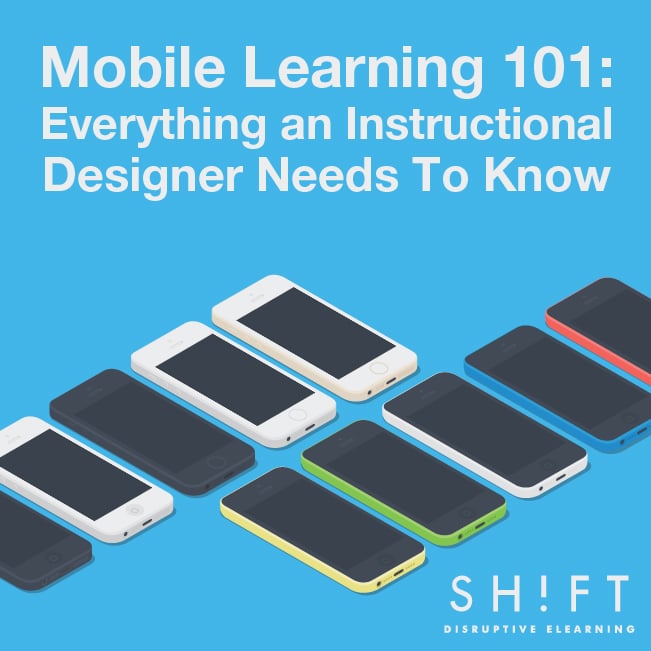The web is abuzz with talks of mobile learning. With its rise come many benefits, from higher productivity to better engagement. But with all the noise or constant stream of data online, it's difficult to find really useful information. That's why we've gleaned some links to resources specifically to help instructional designers get a holistic view about the subject.

1. Mobile Learning HandBook
This is a high-level guidebook suitable not only for instructional designers but also project managers and other stakeholders. It emphasizes a change of mindset among professionals.
It's a pretty solid 42 pages filed with mobile learning resources. Peruse it if you want to learn basic definitions, see examples, and understand the issues, opportunities, and best practices on the subject. There's also a comprehensive list of design considerations and valuable tools included.
More importantly, the authors intend the document to be regularly updated. They even welcome suggestions for changes or additions. It's available in PDF, through a browser, or in a lot of several platforms. There's a short version suitable for reading on mobile devices.
2. 7 Things Everyone Should Know About Mobile
As you can see from the title, this whitepaper by Dr. Naomi Norman is divided into seven sections, namely:
- The business case for mobile learning
- How to build a mobile learning strategy
- What to do about all the different mobile devices
- Whether to build your own mobile learning or commission bespoke
- What’s unique about mobile learning design?
- How to make mobile assessment work
- How to publish your mobile learning
There are helpful statistics included here. Besides the numerical figures, what makes this a more compelling read is its organized structure, conciseness, smart use of images or visual elements, and, most importantly, comprehensive listing of resources.
You can complete this guide in less than half an hour. It's a short yet comprehensive introduction to the world of mobile learning.
3. Creating Mobile Learning That Works
This 23-page by Tata Interactive Systems is yet another quick read. It covers the challenges and possibilities you'll face when designing for the mobile medium. So yes, it's going focus on basic visual elements and usage patterns for mobile patterns.
Each page in this study is carefully laid out in tables, visual diagrams. You'll find, along with some examples, invaluable notes on the following:
- Complexity of media elements
- Visual display on mobile devices
- Native, hybrid and web-based apps
- Mobile learning and social networking
4. 3 Design Guidelines to Consider for Mobile Learning
This article only has 3 short sections on the following: design interactions for the learning moment, design the interface for the device, design for mobile browsers. If you only have 10 or so minutes to spare, this is a perfect start.
5. Mobile Learning Myths
There are a number of mobile learning myths that have not yet been debunked. There are 10 of the most common ones found here, including some notable myths that mobile learning is merely ‘learning on the move’ and that mobile devices are not suitable for learning.
There isn't any truth to these, of course. That's why well-informed instructional designers always considered them as myths. For those new to the industry, however, this article offers a brief yet brilliant explanation.
6. Designing it Right: Mobile Learning Guide Series
This is a three-part series that covers the process of mobile learning design and development in depth. It's a product of Kineo's experties earned after years of experience in the UK and USA. All files are delivered in PDF.
The first part deals with how and where to use mobile and multi-device learning. It's primarily geared towards teams tasked with adopting mobile learning for their business.
In part two, the focus shifts on the practical aspect of mobile learning. The authors laid out the technical options available so that you can successfully implement best practices.
The third part takes you to the step-by-step process of creating instructional materials for mobile, from scoping and scheduling to testing and implementation.
7. Top 6 Design Considerations for Creating Great Mobile Learning
This is a straightforward read that assumes you already have some knowledge of the devices you're creating content for. It encourages you to consider, among other things the physical properties and usage of the device.
Tablets and smartphones, for instance, heavily rely on a touchscreen while desktop computers are mainly used with mouse and keyboard. Students, of course, learn differently depending on the device they're using.




